Against all the odds, LOSC Lille defied expectations to win the 2020-21 Ligue 1 season. Normally considered a “one-team league”, Lille ensured the season would go right down to the final day, where PSG’s three season title streak would officially come to an end. Under the influence of Christophe Galtier, Les Dogues conceded just 23 goals and kept an astonishing 21 clean sheets in 38 matches. Their defensive prowess set them on the path to win the league title right from the very opening day of the season, and tactically, they’ve been one of Europe’s most intriguing sides. So with that, here is a tactical analysis of Christophe Galtier’s Ligue 1 winning LOSC Lille in 2020-21.
system of play: 4-4-2
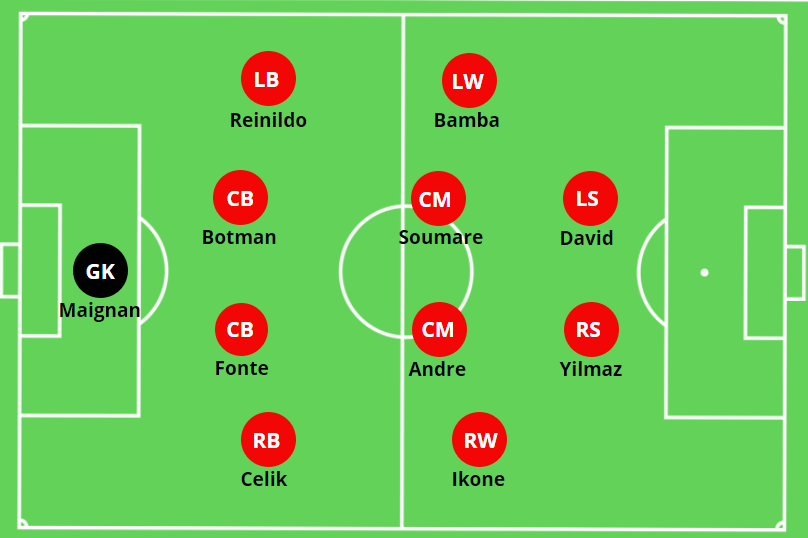
LOSC Lille play in a defensive-minded, robust 4-4-2. There’s an old saying about how defense wins championships, and Lille turned that into reality this season. It all starts at the very back, where their fantastic goalkeeper Mike Maignan has played every game, keeping 21 clean sheets in the process. Central midfielder Benjamin Andre also stands out for his defensive attributes, completing 3.3 tackles and 2.2 interceptions per game, the second highest combined total in the league. Boubakary Soumare is his most frequent partner in midfield, and the highly rated 22-year-old midfielder also puts up excellent defensive numbers on a per 90 basis. Renato Sanches has also improved in the position and provides a tertiary option with a greater attacking threat. These players have to be quite adept at covering space as they are, since a midfield three could easily outnumber them.
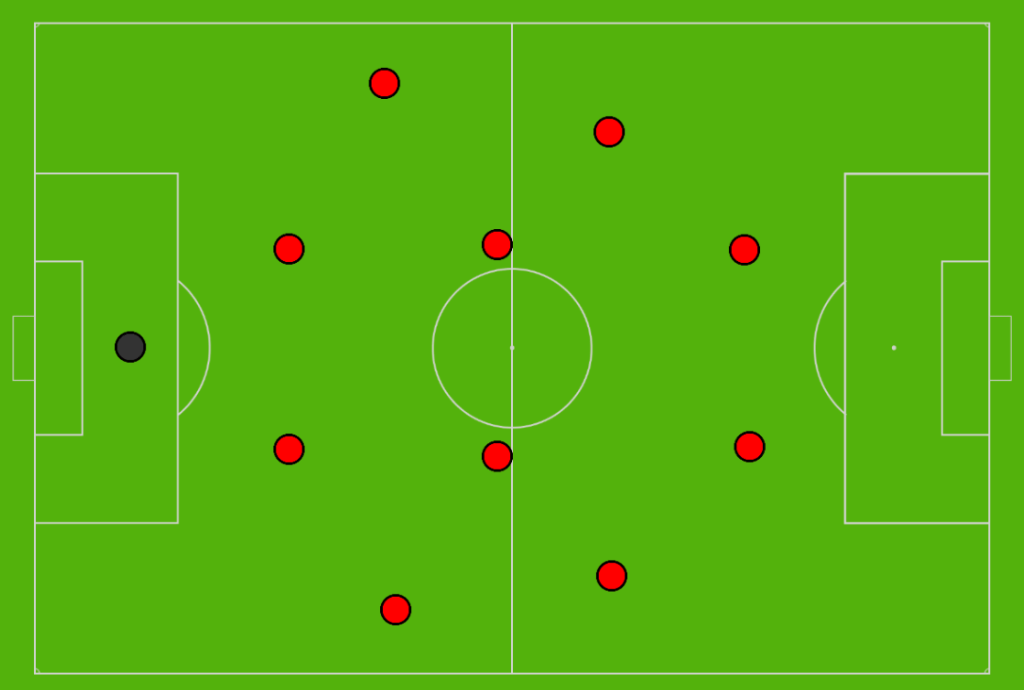
But like in central midfield, Les Dogues have also been exceptional at winning the ball in wide areas, with their fullbacks the next two best tacklers in the team. Reinildo on the left and Turkish defender Mehmet Zeki Celik have contributed with 2.7 and 2.5 tackles per game respectively. Reinildo in particular is exceptionally fast, and times his tackles very well, with a 60% win rate and only 2 yellow cards this season.
In between the two fullbacks, Galtier has experience in the form of Euro 2016 champion Jose Fonte, plus the highly-rated 21-year-old defender Sven Botman, who came over from Jong Ajax after a successful loan spell with SC Heerenveen in 2019-20. Fonte is the team’s most successful tackler and header of the ball, with 74% of his duels won in both regards, while Botman has more touches, passes and carries than any other Lille player.
Embed from Getty ImagesFurther forward, Lille boast their best attack since the days of Eden Hazard and Gervinho. Jonathan David has been one of the signings of the season, scoring thirteen goals and forming one-half of an excellent striking partnership up front, after his move from Belgian side Genk. The star in the team however is arguably the 35-year-old Turkish centre-forward Burak Yilmaz, who’s contributed sixteen goals with five assists in twenty-eight league matches. His compatriot Yusuf Yazici and French forward Jonathan Ikone have also pushed for a place, contributing to eleven and nine of Lille’s goals respectively. On the wings, Galtier also has lots of firepower and pace to work with – most notably Jonathan Bamba and Luiz Araujo, plus the versatile Ikone, Sanches and Yazici. Bamba’s impressed in particular with his pace and power on the left, contributing 6 goals with 9 assists this season. The silky smooth dribbler also leads his team in key passes, passes into the penalty area and has more than double the amount of touches in the attacking third than any of his teammates. Then with depth in players like Xheka and the young Croatian defender Domagoj Bradaric, Lille are well set up to keep their squad small and consistent.
defensive principles
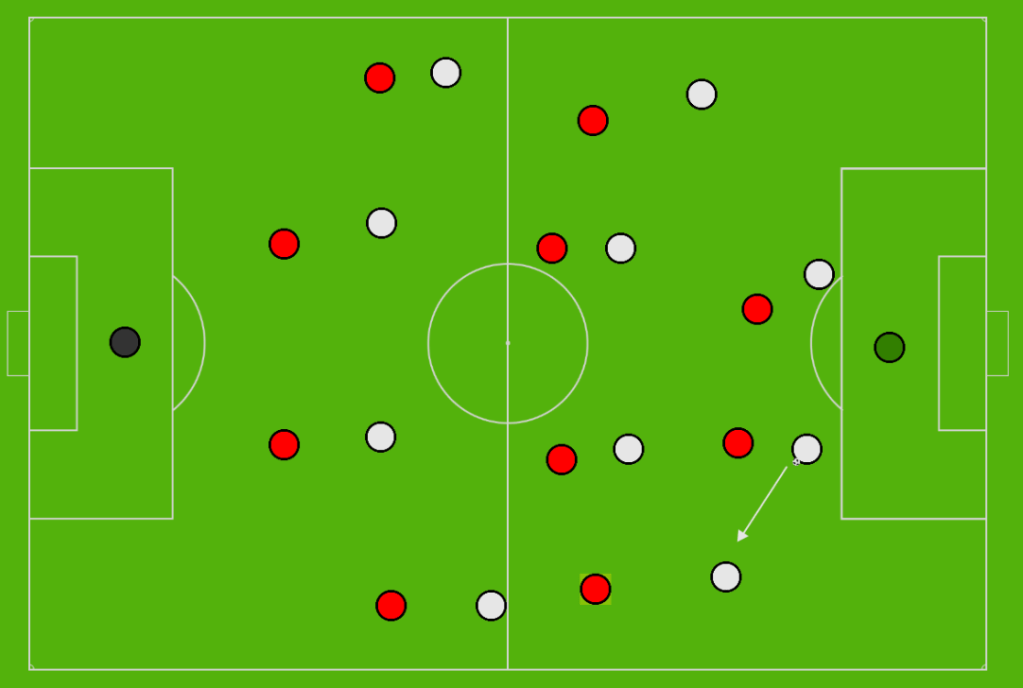
The success of Lille’s stellar defensive record this season is in large part thanks to their compact 4-4-2. Lille don’t press particularly high or intense, instead sitting back in more of a mid-block and working to limit penetration into central areas.
When they do press from the front, Lille’s strikers attempt to force passes into wide areas through careful body positioning. This then allows the team to press in greater numbers in the wide areas, with the fullbacks pushing up alongside the wingers. If a pass is made into a central area, Galtier’s team may ramp up their press in a diamond shape, with the two strikers, the near-sided central midfielder and the near-sided winger combining to limit the opposition’s time and space.
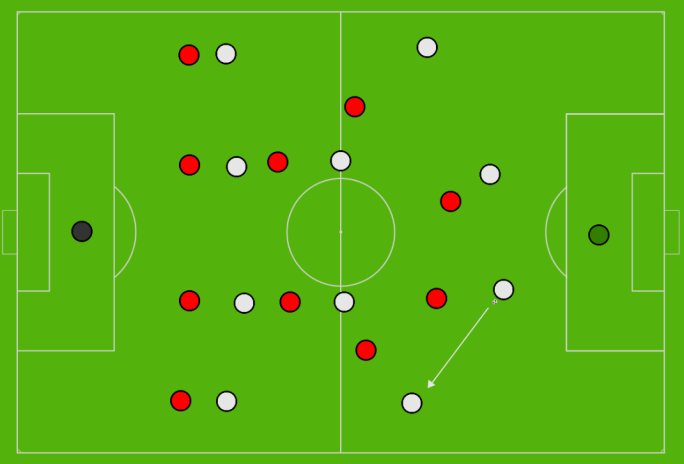
With their high number of tackles, Lille have defended the wide areas particularly well, while Andre and Soumare have been right in the mix to stop the opposition from penetrating centrally. The narrowness of Lille’s defense means their wingers often drift inside in more of a 4-2-2-2, lulling the opposition into a false sense of security out wide, that is rarely ever exposed. In fact Lille have also been good at stopping shots from coming through central areas. Only Marseille have had a higher percentage of their shots come from the left-hand-side than Lille, expressing one particular example of how they often force their opposition into areas of the field that are more difficult to score from.
While Lille have been great defensively, they’ve also succeeded in attacking quickly after winning the ball. In fact no team have spent less time in their own third of the pitch than Galtier’s team – emphasizing how effective they’ve been in stopping attacks from developing, and the subsequent quickness to their attacks.
ATTACKING PRINCIPLES
Embed from Getty ImagesLille have been deadly in attack this season. They’ve scored 64 goals, and only PSG have attacked down the middle more than Les Dogues. Verticality is an essential characteristic of good counter attacking teams, and this essentially means that Lille look to get the ball into their strikers earlier than most. Their wingers also often invert, which tends to increase their verticality. This of course is not to suggest that Lille don’t use width in their attacks, just that other teams do so more, and that Galtier’s men are more effective at actually breaking lines and penetrating central channels than just about any other team in the league.

The width is often maintained by fullbacks in particular, who will play a slightly attacking role in getting up and down the wings, looking to often overlap their wingers. If they find themselves with the ball high and wide, Lille’s fullbacks are still quite patient in delivering the ball into the box, and may instead choose to cut it back for the winger to deliver instead. Their high position can theoretically leave Lille exposed on the break in the wide areas. Their fullbacks, particularly Reinildo are very fast and good tacklers, but the positioning of their central midfielders and centre-backs has to be spot on in these instances to stop the opposition from breaking quickly.
Embed from Getty ImagesBut back over to the attacking side of things, Lille’s width in the final third is also mitigated by the front four coming closer together and looking to interchange passes and interchange in their movement around the eighteen-yard box. When you add one central midfielder often pushing up to join the attacks to that mix, it becomes quite chaotic for opposition defenders to contend with. This chaos makes it very difficult for the opposition to react, and Lille have often come out on top as a result. As Alex Stewart correctly and adeptly noted in Tifo Football’s analysis, Les Dogues have scored more goals on rebounds than any other side in Ligue 1, which showcases just how many players often flood the box at once.
Embed from Getty ImagesFinally, when examining their striking partnership, Lille play with more or less a ‘number 10’, alongside a more traditional ‘number 9’, such as Jonathan David dropping in and out between the lines, whilst playing alongside the target man that is Burak Yilmaz. But their movement remains more fluid than striking partnerships of this nature in the past. It’s not always the same player dropping in and the same player staying high, nor do they always stay to one specific side. They both may drop in between the lines or deep to pick up the ball, they may swap sides, and both may also hold a high position as other players move in-field. This variety again makes it very difficult for opposition teams to adequately react.
build up

Lille spend very little time in their own third, but they do still focus on playing out from the back. Their two central defenders will hang wide to form a triangle with goalkeeper Mike Maignan, as the fullbacks push up high and wide. One of the two central midfielders may drop deep to pick up the ball lower and turn that triangle into diamond, leaving space for one of the two strikers or an inverted winger to also drop deep and add an extra number in midfield. The other central midfielder will help with this, drifting wide and drawing a player with him, exposing more room for a teammate to come inside.

The overall positioning and movement of the fullbacks is also particularly key in build-up phases. They may hang high as a central midfielder drops deep, or one fullback may drop in alongside the centre-backs, forming the same number of players, but now with both central midfielders high instead. This would in theory make it more difficult for Galtier’s to attack down the side that the fullback has vacated if they needed to, unless of course the winger dropped to maintain that balance. The risk in Lille playing with this variety is low, and the potential benefits are high. It ensures they don’t become predictable and they can expose different areas of the field based on their reading of the game, rather than needing to stick to a dogmatic way of playing out from the back that might not work in a given moment. Lille have actually been quite smart with their build-up, and they are rarely ever caught out from over-doing it. If they start to feel under pressure, they still have the option of going long into the big man up top Burak Yilmaz or the speedy forward Jonathan David. Otherwise, those strikers are very uninvolved when Galtier’s team have the ball, until it reaches the final third.
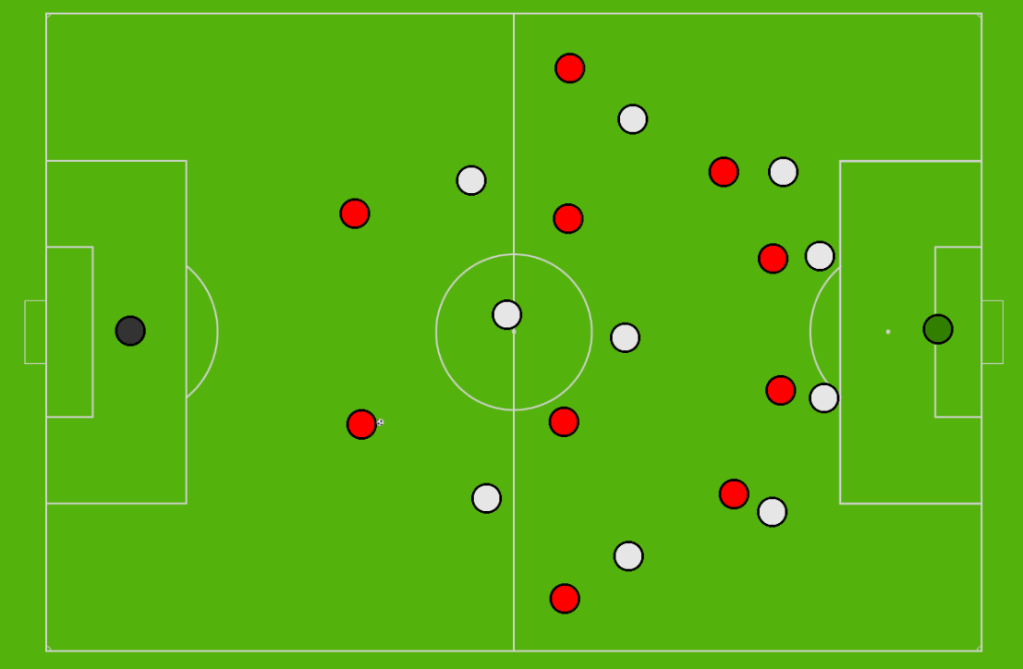
Higher up the pitch that back-three structure may turn into more of a 2-4-4, with the centre-backs circulating the ball wide to the fullbacks, and the wingers tucked inside alongside the strikers. Again, Lille have variety in how they play, which aids in their ability to adapt to their opposition.
CONCLUDING THOUGHTS
Embed from Getty ImagesRegardless of whether or not they won the league, LOSC Lille should be given so much credit for the way they’ve played under Christophe Galtier this campaign. The club have put together their very best team since the days of Hazard and Gervinho, and its paid off with them winning the league for the first time since those players were around. Lille’s tactics remain very fluid in all phases of the game, which allows for greater flexibility of their players to read the game and not have to always play in a dogmatic style that might not fit the moment. This flexibility also creates complications for the opposition, as Lille have boasted the best defensive record and one of the best attacking records in Ligue 1. On top of all else, they have officially been crowned champions, which is a remarkable achievement for a team to do in a league that is often considered a “one-team league.” So before moving on to the Football Manager part of this video, we want to congratulate Lille on a fantastic season, that shows so much promise for the future.
Embed from Getty Images
So there it is! Our tactical analysis of LOSC Lille under the influence of Christophe Galtier in 2020-21. Be sure to check out more of our tactical analyses, and consider becoming a paid subscriber for just $1 per month. Thanks for reading and see you soon!
You might also enjoy…
-> Mauricio Pochettino – PSG – Tactical Analysis
-> Erik Ten Hag – Ajax – Tactical Analysis
-> What Gerardo Seoane will bring to Bayer Leverkusen – Tactical Analysis


8 thoughts on “How LOSC Lille Won Ligue 1 – Tactical Analysis”